As the two-year anniversary of the COVID-19 pandemic approaches, community leaders in Belmont-Cragin are focused on building the resilience of residents as a way to solve larger issues like neighborhood crime and school safety.
Through a continuing effort that addresses well-being and mental health, the Resilient Belmont-Cragin Community Collaborative brings together residents, community groups, health centers and other stakeholders to figure out what the community needs.
The idea behind the community resilience initiative is to identify and recognize negative childhood experiences in individual community members. These experiences shape the kind of adult a person will become, causing a cycle of family stress that goes on to influence the community. The effect is like a house of cards.
“The collaborative is very intentional about getting as many different stakeholders around the table as possible to make a difference,” said Dr. Judith Kent, associate professor in the College of Psychology and Behavioral Science at National Louis University and collaborative committee member. “I think we all experience trauma to some degree, and members of a community experience more than one trauma, especially in urban areas.”
Led by Esteban Rodriguez, director of Community Schools and Youth, and Cindy Santana, resilience coordinator at the Northwest Center in Chicago, the group is using CRI to coordinate community organizations and outside partners like Lurie Children’s Hospital to effect positive change.
Belmont-Cragin’s needs were first identified by a series of community-wide surveys and activities deployed by the collaborative. The results will be narrowed to 300 residents for participation in a final survey to determine wellness outcomes that will tailor resources and services specific to the community.
One of the stressors identified by the group in its first-round data is crime. As of 2020, there were 78,116 residents in Belmont-Cragin. Between Feb. 20, 2020, and Nov. 2021, 108 crimes were reported.
Community resilience models acknowledge that every resident’s stress is not the same in order to build better communities.
The concerns of two employees at separate businesses in the community illustrate how it works.
Karina Velazquesz, 18, lives in Belmont-Cragin and works as a counter employee at Sbarro, LLC located near Central and Fullerton streets.
“The good thing is that when you walk around the neighborhood is you see familiar faces, places and everybody is nice,” she said. “There has been a lot of violence lately. My Mom doesn’t let me and my sisters out late at night.”
Considering what might make the neighborhood safer is a “tricky question,” Velazquesz said.
“I don’t think anything can help the neighborhood become better unless parents are stricter with their kids.”
Jimmy Flores, 44, manager at Dollar Island near Diversey and Austin streets, has a different perspective about crime in Belmont-Cragin. Positive contact with police is increasing community resilience by slowing customer harassment by gang members, he said.
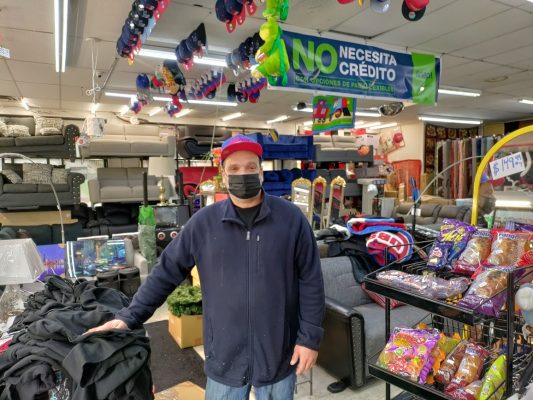
“The neighborhood has changed a lot,” he said. “It got good with no gang members. They’re leaving because the police are doing more patrols and making store visits. That’s really helping us out a lot. Customers feel more comfortable with coming in.”
Resilience models are a national and global movement. The Empowered Communities Program in San Francisco uses a collaborative model like the initiative used by RBCCC. Resilience models like urban pandemic recovery, green/disaster initiatives, and crime reduction all identify stressors that begin the move toward resilience.
Bridging the gaps between differences in stress from one person to another is a hallmark of the CRI model.
“The ways people cope with stress might involve music, a family pet or talking to other people. We all contribute to resilience,” said Dr. Kent. “It comes down to self-regulation. As you self-regulate, you co-regulate and pay it forward. When we multiply that with all the people we’re interacting with, that’s how we build community resilience. In terms of stress, there’s human-everyday, at home, and community stress. We all react in different ways. To get a whole community to be resilient, it starts with all of us.”
David Orozco, 38, the owner of RDC Studio, LLC in Belmont-Cragin, is also a resident in the community. He started his business in a neighborhood storefront with a grant from Northwest Center Community Development Corporation’s Crecer Business Incubator program.
RDC is a studio, gallery and retail business that sells professional art supplies for graffiti, airbrushing, fine art production and offers art classes to neighborhood youth, persons with special needs and adults.
“The CDC helped bring me here because they’d rather have Belmont-Cragin artists do public art in the neighborhood,” Orozco said. “My reason behind that is, money is going to talk and Belmont-Cragin residents are going to get moved around. If we leave a blank canvas, gentrifiers will come in and start raising local rents,” he added.
Self-regulation is a skill he learned as a kid. Orozco describes feeling conflicted about choosing gang life, going to school, or being an artist.
“So, I chose to go paint some dreams,” he said. “When I was at school, I drew all the time because school stressed me out. I always did art with my kids, and I have a special needs son, so I know how much art helps people.”
Belmont-Cragin’s youth is a priority for the collaborative and the community. On Diversey street, traffic flows past people with shopping bags who walk quickly to get to their destinations on the gray, chilly December day.
In the auditorium of the Mary Lyon Elementary School at McVicker and Austin streets, the smell of hot coffee and tamales greeted parents as they filed in to attend the Parents Advisory Council on Dec. 8, 2021.
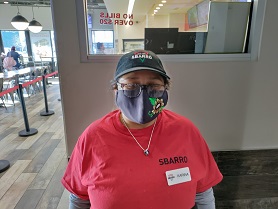
The most urgent matter on everyone’s mind was a car that hit a mother and child walking to school at the intersection of Diversey and McVicker during the week of Nov. 29. Mother and child were fine, the student returned to class, and to remedy the situation, some parents want to hire a crossing guard; others want a stop sign installed at the corner, said Principal Cliff Gabor.
Brenda Ovido, 38, a Belmont-Cragin resident whose child attends the school, wanted stricter safeguards put in place. “We need a Chicago police crossing guard,” she said. “There’s a lot of road rage out there and mandatory classes for road rage, revoking licenses and giving tickets should be used as penalties for drivers who aren’t stopping at the intersection.”
Jose Quiles, a 23-year community representative and FOIA officer for the local school council, disagreed and stressed parental membership on the school council is the best way to empower parents, calling for more people to join.
“I’m going to be real with you,” he said. “The stop sign at Meade and stoplight at Austin at Diversey were installed 25 years ago to prevent accidents.” Getting a stop sign at McVicker and Diversey means requesting a traffic study from Ald. Ariel Reboyras’ 30th ward office which may not work because parents can use the Meade and Austin crossing points to stay safe, he said.
On Diversey street, large yellow banners advertising COVID-19 tests in Spanish and English flap against the walls of one-stop dollar stores proving the community’s awareness and teamwork to combat COVID-19.
During the past five months, Ald. Gilbert Villegas’ 36th ward office in the Brickyard shopping center is serving as a vaccination site giving free vaccines to ward residents, including Belmont-Cragin residents and to people who are five years or older.
The Northwest Center has also been active providing vaccines to residents. From February through April 2021, the center partnered with the City of Chicago and other organizations at a mass event and gave 17,000 first vaccinations to Belmont-Cragin residents, said Ruben Olivares, 35, COVID-19 program manager for the Northwest Center and member of the rapid response team.
“I’m so impressed with RBCCC and Belmont-Cragin. The network is so deep and wide,” Kent said. “There’s so much going on and it’s all connected, which is not what you see in a lot of communities. I am honored to be part of the work they are doing.”


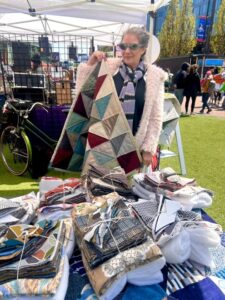
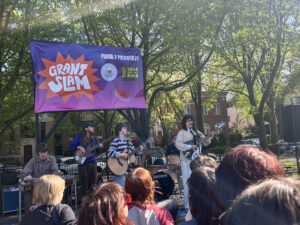
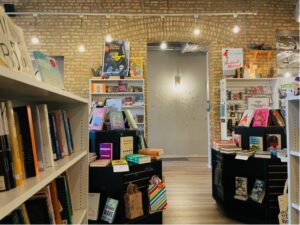

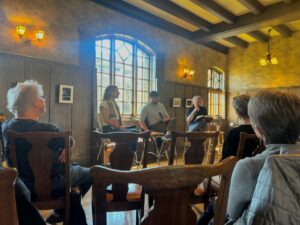





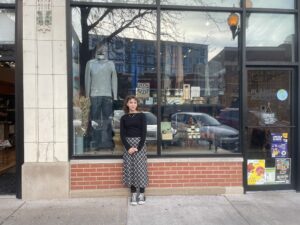

Be First to Comment